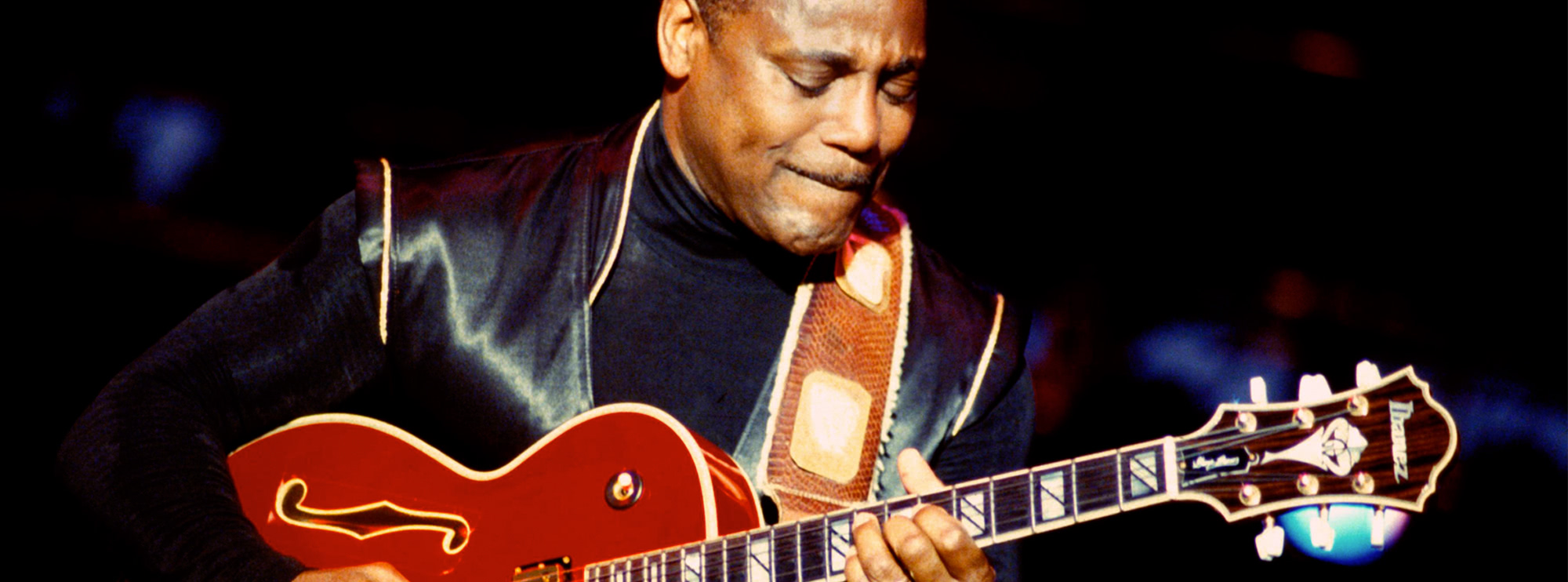Metallica's Black Album: A guitarist's perspective
Guitar lessons by Jamie Humphries
Released in 1991, Metallica's self-titled album, commonly referred to as the "Black Album," marked a significant shift in the band's musical direction. With its heavy, powerful riffs and introspective lyrics, the album showcases the incredible guitar work of lead guitarist Kirk Hammett and rhythm guitarist James Hetfield. The album marks a change in Metallica’s direction from the early thrash metal roots of the band’s previous four studio albums towards a more commercial, heavy metal sound, that helped the record début at number one on the Billboard 200.
In this course, LickLibrary veteran, Jamie Humphries walks you through the many highlights of each song from the heavy metal icons one phrase at a time, including all of James Hetfield and Kirk Hammett’s legendary guitar parts from the tracks; “Enter Sandman,” “Sad But True,” and the anthemic, “Nothing Else Matters.” This article will explore the album track by track, analysing the guitar techniques used, solos, scales, and more, to provide a comprehensive understanding of the album from a guitarist's point of view.
Enter Sandman
The opening track, "Enter Sandman," features a memorable riff in E minor that is instantly recognisable. The main riff is built around power chords and palm-muted notes, giving it a heavy and driving feel. The solo, played by Kirk Hammett, starts with a classic E minor pentatonic lick and gradually builds in intensity. Hammett employs bends, slides, and a touch of the blues scale, adding chromatic passing tones for a darker sound.
Sad But True
"Sad But True" is built around a heavy, drop-D tuned riff that utilises power chords and palm-muted open strings. This gives the song a heavier and more aggressive tone. The solo showcases Hammett's ability to create melodic phrases using the D minor pentatonic scale, with the use of string bending, vibrato, and legato techniques. The solo also features a section with rapid alternate picking, demonstrating his technical prowess.
Holier Than Thou
This track features a galloping rhythm and a syncopated riff in E minor. The solo in "Holier Than Thou" is relatively short but impactful. It starts with a melodic phrase that uses slides and pre-bends, followed by a rapid, ascending pentatonic run using alternate picking. Hammett then incorporates some bluesy bends and finishes with a fast legato run.
The Unforgiven
"The Unforgiven" features clean arpeggiated chord progressions during the intro and verses, with a distorted chorus that uses power chords. The solo is built around the E Aeolian mode and is one of the most melodic and emotional solos on the album. Hammett employs various techniques, such as slides, string bending, vibrato, and a fast legato run at the end.
Wherever I May Roam
The intro to "Wherever I May Roam" uses an exotic-sounding Phrygian Dominant scale, giving it a unique flavour. The heavy, palm-muted riff is in E and features a syncopated rhythm. The solo in this song is highly melodic, using the E harmonic minor scale. It showcases Hammett's use of slides, bends, and alternate picking to create a captivating and expressive solo.
Don't Tread on Me
"Don't Tread on Me" starts with a powerful E major riff that incorporates slides and power chords. The solo is another example of Hammett's ability to craft memorable and melodic solos. He uses the E Mixolydian mode, combining string bending, vibrato, and alternate picking techniques to create a powerful and engaging solo.
Through the Never
This track features a fast, palm-muted riff in E minor with open string accents. The solo is highly technical, with rapid alternate picking, legato runs, and string skipping. Hammett also incorporates double-stops and some bluesy bends for added flavor.
Nothing Else Matters
"Nothing Else Matters" is a ballad that showcases James Hetfield's finger-picking skills. The intro and verses feature an arpeggiated chord progression in E minor, while the chorus is built around power chords and barre chords. The solo, played by Hammett, is one of the most melodic and emotive on the album. It is primarily built around the E Aeolian mode, and Hammett employs a range of techniques, including string bending, vibrato, slides, and legato. The solo also features a tasteful use of harmonics, adding depth and texture to the overall sound.
Of Wolf and Man
"Of Wolf and Man" starts with a driving riff in E minor that utilizes power chords and palm-muted open strings. The solo in this song is a fine example of Hammett's command of the E minor pentatonic scale. He employs techniques such as alternate picking, string bending, and slides to create a high-energy and impactful solo that complements the song's aggressive nature.
The God That Failed
This track features a heavy, palm-muted riff in E minor, accompanied by syncopated rhythms and power chords. The solo in "The God That Failed" is built around the E Dorian mode, showcasing Hammett's ability to create melodic solos with a darker tonality. He incorporates a range of techniques, including string bending, slides, vibrato, and legato, to craft an expressive and memorable solo.
My Friend of Misery
"My Friend of Misery" starts with a clean, arpeggiated chord progression in D minor, creating a somber atmosphere. The heavy, palm-muted riff that follows incorporates power chords and slides, adding to the song's intensity. The solo in this track is another example of Hammett's mastery of the D minor pentatonic scale. He uses techniques such as string bending, slides, vibrato, and alternate picking to create a poignant and expressive solo.
The Struggle Within
The final track on the album, "The Struggle Within," features a fast, aggressive riff in E minor that utilises power chords, palm-muted open strings, and syncopated rhythms. The solo is a showcase of Hammett's technical skills, with rapid alternate picking, legato runs, and string skipping. He also incorporates double-stops, bluesy bends, and slides, giving the solo a dynamic and captivating quality.
Kirk Hammett: The Lead Guitarist's Contribution
Kirk Hammett's contribution to the "Black Album" is significant, with his solos adding depth and emotion to each song. He demonstrates a mastery of various scales and modes, crafting memorable and melodic solos that complement the heavy riffs and powerful vocals. His ability to seamlessly blend techniques such as string bending, vibrato, legato, and alternate picking showcases his versatility and skill as a guitarist.
In conclusion, Metallica's "Black Album" is a milestone in heavy metal music, with its powerful riffs, introspective lyrics, and exceptional guitar work. The album showcases the incredible talents of Kirk Hammett and James Hetfield as guitarists, blending heavy and melodic elements seamlessly. As a guitarist, exploring the techniques, scales, and solos used throughout this album can provide valuable insight and inspiration for your own playing.
Guitar Techniques Used in the Black Album
Here is a list of guitar techniques used throughout the album, with links to their respective definitions:
- Vibrato
- Alternate Picking
- Legato
- Double-Stop Bends
- Tremolo Picking
- Chord Progressions
- Arpeggios
- Harmonics
- Pull-Offs
- Power Chords
- Palm Muting
- Barre Chords
- Hammer-Ons
- Double-Stops
- Slides
- String Bending
- Open-String Riffs
- Bluesy Bends
- Octave Melodies
- Galloping Rhythms
- Arpeggiated Chord Progressions
- Chromaticism
About The Tutor
Tutor Profile
Jamie Humphries
Jamie is one of the mainstays of LickLibrary, having a stream of hugely successful best selling DVDs, Jamie is best known as Brian May's sideman who he's played shows with all over the world. Aside from this Jamie is a hugely popular clinician working all over the world with Ernie...



